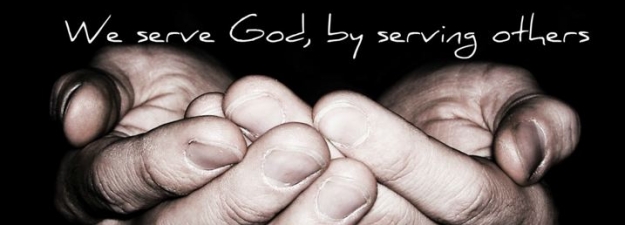
Read the Gospel of Mark
January 9, 2021
Everyone is encouraged to read the gospel of Mark during the season of Epiphany, which ends on Ash Wednesday, Feb.17. This is the shortest gospel, only 16 chapters! Here is a link to a very interesting video overview of the book. Use it to get you motivated!
https://www.facebook.com/jointhebibleproject/videos/the-gospel-according-to-mark/660482354155162/
Then grab your Bible and start reading and/or watch the wonderful production of each chapter on
produced by theFellowship for Performing Arts. It is powerfully performed by Max McLean.
(Go to YouTube and type: Fellowship for Performing Arts, Gospel of Mark)
https://youtu.be/Un3gSYkd0ds
|
|
At first glance, we might be on the side of the Pharisees here, especially these days with pandemic practices of handwashing and sanitizing. As we begin our week with Mark, Jesus and his disciples are eating with defiled hands, “that is, without washing them,” and the religious leaders are aghast. Of course, the religious leaders aren’t worried about COVID-19 germs here. They’re upset because Jesus (again) isn’t following the religious rules. But Jesus counters, “This people honors me with their lips, but their hearts are far from me.” In other words, their mouths are writing checks that their actions won’t cash.
Indeed, Jesus makes the point time and again that what truly matters is the state of the soul. The most ardent rule-follower can have a festering heart. It is from there that evil intentions come, Jesus says. “Fornication, theft, murder, adultery, avarice, wickedness, deceit, licentiousness, envy, slander, pride, folly. All these evil things come from within, and they defile a person.”
We then encounter a miracle story that, at first reading, seems un-Christ-like. A woman (a Syrophoenician in Mark and a Canaanite in Matthew) brings her daughter to Jesus for healing. Jesus seems to dismiss her pleas, but the woman counters, “Sir, even the dogs under the table eat the children’s crumbs.” Despite what appears to be Jesus’s reticence to offer healing, the woman’s public proclamations of faith see her daughter healed and Jesus’s ministry expanded. The Gospel of Matthew recalls Jesus as saying, “Great is your faith!”, a reminder to us of the value of faith, even when all seems lost.
At the end of chapter seven, Jesus performs another miracle by healing a man who is deaf and mute. Again, he orders the man and other witnesses to tell no one. The people are bewildered and amazed, uncertain about the true identity of Jesus. Even when Jesus transforms seven loaves and a few small fish into a meal for four thousand, the people still ask for a sign from heaven. In perhaps the understatement of all understatements, Jesus sighs deeply.
Throughout the first part of Mark, we have read numerous miracle stories with people asking who Jesus is, but by the end of our readings this week, Jesus’s identity is apparent. He asks the disciples, “But who do you say that I am?” and Peter answers, “You are the Messiah.” With this pronouncement, we move into the second half of Mark, as the narrative shifts from stories of Jesus’s miracles to his teachings to the disciples. But just as the disciples sometimes have a hard time believing in the miracles, they also struggle with Jesus’s teachings. Jesus tells them that he will undergo great suffering, be killed, and rise again. Peter reminds me of a consummate campaign manager who recognizes that this message won’t sit well with the crowds. He takes Jesus aside, perhaps telling him to soften the words or recast them into more acceptable soundbites, but Jesus isn’t having it. “Get behind me Satan,” he tells Peter. Being a follower of Christ will not be easy, and he won’t add a spoonful of sugar to help make the medicine go down. Deny yourself. Take up your cross. “And those who lose their life for my sake, and for the sake of the gospel, will save it.”
Gulp.
This section ends with the Transfiguration, one of the pivotal moments of the Christian story. In all three synoptic gospels (Matthew, Mark, and Luke), the Transfiguration follows the confession of Peter that Jesus is the Messiah, the Christ. The Transfiguration is a further revelation of Jesus as the Son of God, as he is transfigured and shines with rays of divine light and joy. The prophets Moses and Elijah appear, and the three talk. Can you imagine the conversation? Peter (again, earnest Peter, bless his heart) offers to stake out the land and build a tent so they may stay there. But we know that we cannot, in this life, stay on the mountaintop. We hear a voice from the cloud, “This is my Son, the beloved,” the type of words we all hope to hear one day, and then they descend the mountain, preparing for the difficult days ahead.
Mark 9:14-11:19
Viewing the Gospel of Mark as a three-act play, our readings for this week move us into Act II, as the focus shifts from Jesus as miracle-worker to Jesus as teacher. To be certain, the Jesus in this account is not one of an endearing mentor who greets students with a warm hug and is gently encouraging. In Mark’s just-the-facts-mam style, Jesus’s teachings are delivered in staccato, like bullet points in a research paper:
· Whoever wants to be first must be last
· Whoever welcomes one such child in my name welcomes you
· Whoever is not against us is for us
At times, Jesus seems terse and weary. But who can blame him? He literally has the weight of the world on his shoulders. Despite an array of miracles (including one at the beginning of this week, in which Jesus casts out evil spirits from a young boy), the disciples still don’t quite get it. He tells them directly: “The Son of Man is to be betrayed into human hands, and they will kill him, and three days after being killed, he will rise again.” But they do not understand.
Nevertheless, there’s plenty of jockeying for position. Even if the disciples can’t quite fathom the resurrection, they recognize that Jesus is an influential leader, and they want to be considered MVPs. Like children, they argue about who is the greatest among them and, later, who gets to sit at his right and left sides. I imagine Jesus as a frustrated parent, pulling the car onto the shoulder after the backseat bickering reaches a crescendo. “To sit at my right hand or at my left is not mine to grant… whoever wishes to be first among you must be slave of all. For the Son of Man came not to be served but to serve, and to give his life a ransom for many.” And don’t make me pull over again.
Jesus’s teachings continue to upend conventional norms. To lead means to serve. The kingdom of God belongs to children. Wealth is not a key to heaven. Jesus shocks the disciples, telling them that “it is easier for a camel to go through the eye of a needle than for someone who is rich to enter the kingdom of God.”
Throughout the readings, we see Jesus moving into ACT III, his arrival in Jerusalem and ultimately the crucifixion and resurrection. As foretold in Zechariah, Jesus enters from the Mount of Olives, taking a similar path as the traditional lamb sacrificed in the Passover. As Christians, we celebrate this triumphal entry on Palm Sunday, recalling how Jesus rode a simple colt and was welcomed with palms (or, as Mark says, “leafy branches”) and great joy. The people praise, “Hosanna! Blessed is the one who comes in the name of the Lord!” But crowds can turn quickly to mobs; these shouts of joy become chants for vengeance. “Crucify him,” these same people will bellow. “Crucify him.”
This reading ends with Jesus turning over the tables of the money changers and merchants, a story present in all four gospels. Many scholars consider Jesus’s direct challenge to the authorities to be the trigger for his death just a few short days later. The end is near. But so too is the beginning.
Back




